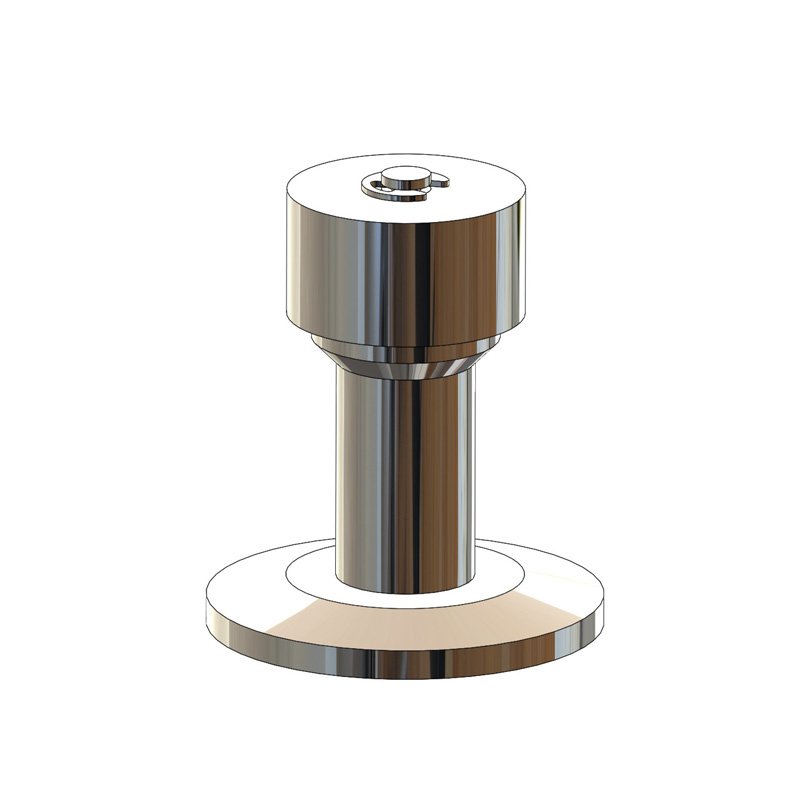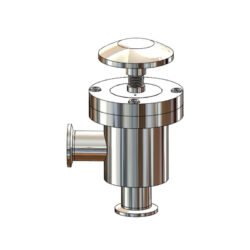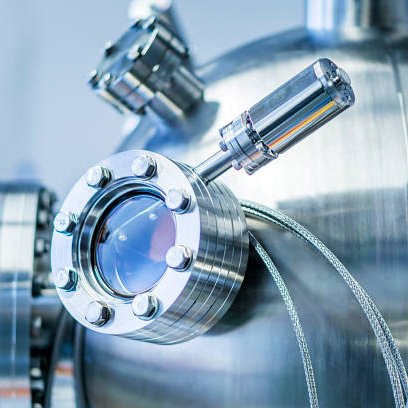Vacuum Valves
Description:
Vacuum valves are essential components in systems that require the control and regulation of vacuum pressure. They are used in a variety of applications, including laboratory research, industrial processes, semiconductor manufacturing, and vacuum packaging.
Selection Criteria
When selecting a vacuum valve, consider the following criteria:
- 1. Vacuum Level: Ensure the valve can operate effectively at the desired vacuum pressure.
- 2. Flow Rate: Choose a valve that can handle the required flow rate.
- 3. Material Compatibility: Ensure the valve materials are compatible with the process gases or liquids.
- 4. Temperature Range: Select a valve that can withstand the operating temperature conditions.
- 5. Actuation Method: Decide between manual, pneumatic, or electric actuation based on the application needs.
Enquiry Now
Applications




Types of Vacuum Valves
- Application: Commonly used in high vacuum applications.
- Function: Provide a straight-through passage for the vacuum with minimal flow restriction. When closed, they offer a high level of isolation.
- Application: Used in systems where frequent opening and closing are required.
- Function: Consist of a ball with a hole through the middle, allowing for quick opening and closing.
- Application: Suitable for large diameter piping and low to medium vacuum levels.
- Function: Have a rotating disk to regulate flow. They are easy to operate and offer a compact solution.
- Application: Often used in ultra-high vacuum systems and applications requiring precise flow control.
- Function: Use a flexible diaphragm to control flow, providing excellent sealing and minimal contamination.
- Application: Ideal for precise flow control in low flow applications.
- Function: Use a tapered needle to adjust the flow rate, allowing for fine-tuned control.
- Application: Prevent backflow in vacuum systems.
- Function: Allow flow in one direction and automatically close to prevent reverse flow.
- Application: Common in systems where space is constrained and in-line flow is not possible.
- Function: Have an angled configuration that changes the direction of the flow.
Related products
CVD/PVD Furnace
At CryoVac solutions, we specialize in providing top-quality and high-performance coating solutions that enhance the durability, functionality, and aesthetic appeal of materials tailored for chemical vapor deposition (CVD) and physical vapor deposition (PVD) processes. With a commitment to excellence and customer satisfaction, we work closely with clients to understand their challenges and provide tailored solutions that drive success.
Enquiry Now
Flanges and Fittings
Flanges and Fittings play crucial roles in the construction and operation of vacuum systems. They provide means for connecting different components, chambers, and instruments within the vacuum system while maintaining a high vacuum or ultra-high vacuum environment.
Some details about fittings and flanges commonly used in vacuum systems:
- Flanges: Flanges are flat, typically circular plates with bolt holes around the perimeter. They are used to connect vacuum chambers, components, and instruments together. Flanges come in various sizes, shapes, and materials to accommodate different vacuum system requirements. Common materials for flanges include stainless steel, aluminum, and glass.
- Fittings: Fittings are components used to connect different vacuum system elements such as vacuum pumps, gauges, valves, and chambers. They come in various shapes and sizes to accommodate different vacuum system configurations. Common types of fittings include elbows, tees, crosses, reducers, and adapters.
Enquiry Now
Glove Box
A glove box is a sealed container with built-in gloves that allows users to handle objects in a controlled environment. These boxes are typically used in laboratories, cleanrooms, and manufacturing facilities where it's necessary to manipulate objects in a controlled atmosphere, such as under inert gas or in a low-humidity environment.
Regular maintenance and inspection of the glove box, including checking for leaks and ensuring the integrity of gloves and seals, are also important for safe operation.
Enquiry Now
Vacuum Pumps
1. Rotary Vane Vacuum Pumps
Rotary vane vacuum pumps are designed for a variety of applications requiring robust and reliable performance. These pumps are ideal for laboratory use, industrial processes, and more.
2. Scroll Vacuum Pumps
Our scroll vacuum pumps offer oil-free operation and high efficiency, making them suitable for cleanroom environments, semiconductor manufacturing, and other sensitive applications.
3. Turbo Molecular Vacuum Pumps
Turbo molecular vacuum pumps provide ultra-high vacuum levels essential for advanced scientific research, thin-film deposition, and high-tech manufacturing.
4. Diaphragm Vacuum Pumps
Our diaphragm vacuum pumps are ideal for applications requiring chemical resistance and oil-free operation, such as in laboratories and chemical processing.
Enquiry Now
View Ports
Our state-of-the-art vacuum view ports, essential for industries reliant on precise control and visibility within vacuum chambers.
Built to exacting standards, our view ports provide unparalleled clarity into critical processes, ensuring you can monitor operations with confidence and precision.


















